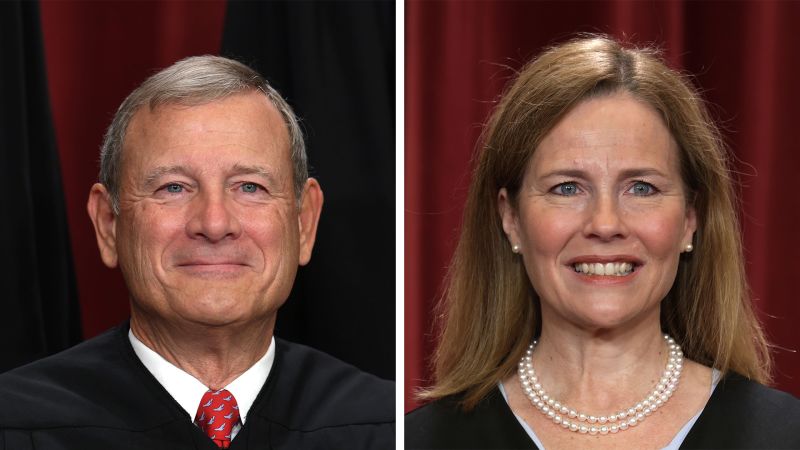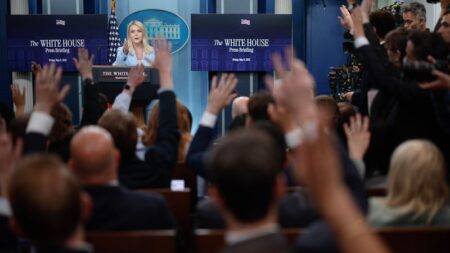Chief Justice John Roberts often expresses concerns regarding his limited influence within the Supreme Court, where he must navigate the dynamics among his eight fellow justices. During a recent gathering with federal judges, he articulated the challenges of leading such a diverse group, commenting, “You can’t fire people if they don’t follow you. You can’t cut their pay.” In this context, Roberts emphasized the necessity of effectively communicating important ideas in varying ways to gain consensus among the justices. Despite these frustrations, it is important to note that Roberts does possess powerful tools, with one of the most significant being his authority to assign opinions that represent the views of the court.
Whenever Roberts finds himself in the majority, he has the privilege of determining which justice will draft the opinion for the court. This role is critically important, as any Supreme Court ruling carries more weight than the final vote; the reasoning behind the decision can establish precedents for future cases. This is particularly true in politically sensitive matters, as the tone and language used can greatly influence the interpretation and implementation of the court’s ruling by lower courts. Throughout his tenure, including his latest term on the high court, Roberts has frequently kept pivotal cases for himself, especially those that pertain to presidential powers.
Nevertheless, Roberts approaches the assignment of opinions strategically, using this power not only to shape legal discourse but also to maintain relationships within the court. Over the years, he has demonstrated a knack for assigning opinions that challenge expectations or counter prevailing ideological narratives. A noteworthy instance of this occurred recently when Roberts assigned a major opinion to Justice Amy Coney Barrett, marking a tactical shift that surprised many observers. As he opened the final courtroom session of the 2024-25 term, he disclosed to a captive audience that Barrett would author the court’s opinion in a high-profile case.
This particular case involved significant implications for former President Donald Trump, as it effectively lifted numerous lower court restrictions on his proposed policies. The ruling allowed Trump greater latitude to implement changes, especially concerning the implications of birthright citizenship for children born in the United States, regardless of parental immigration status. This assignment not only bestowed a substantial honor upon Barrett, who had recently faced scrutiny within the MAGA community, but it also underscored her emerging role within the court’s conservative faction.
The surprise nature of Roberts’ decision induced a buzz within the courtroom. Lawyers and journalists alike exchanged puzzled looks, as many had anticipated that Roberts would retain this pivotal opinion for himself or assign it to a more senior justice. The immediate effect of his decision rapidly neutralized Trump’s previous criticisms of Barrett, with the former president publicly expressing his admiration for her performance and praising the decision’s composition as “brilliantly written.”
Roberts’ selection of Barrett also reflects his strategic motivations to strengthen alliances within the court’s conservative wing and present a united front to address challenges from liberal justices. The decision manifests the dynamic nature of Roberts’ leadership, acknowledging that, while he may have only one vote in the court’s deliberations, his influence over the agenda and discussion remains significant due to his roles in running oral arguments and closed-door conferences.
Traditionally, the most senior justice within a majority aligns with the assignment of opinions; however, as Chief Justice, Roberts wields this authority over his colleagues regardless of their duration on the court. His influence was evident when he assigned opinions for many of the court’s landmark rulings over the past term, highlighting the Roberts Court in practice.
Historically, chief justices have utilized their authority to shape case outcomes, and Roberts follows suit, balancing between rewarding those justices who align with him ideologically while also ensuring representation from across the ideological spectrum. His approaches reminiscent of former Chief Justices, Roberts has frequently selected justices who have demonstrated restraint or crossover votes to maintain the court’s integrity before the public.
In recent decisions, Roberts has assignment trends that challenge expectations, such as assigning liberal justices Ketanji Brown Jackson and Sonia Sotomayor to write some of the court’s prominent rulings. This illustrates a desire to spread influence across the court while recognizing the contributions of these justices to decision-making processes. The distribution of assignments, evident in statistics compiled by SCOTUSblog, emphasizes Roberts’ commitment to equitable participation among justices irrespective of their ideological orientations.
Barrett’s rise within the court demonstrates her capacity for pivotal contributions, marked by substantial cases in areas like Native American rights and executive power. Roberts’ willingness to assign critical opinions to Barrett reflects not only her growing prowess but also Roberts’ strategic vision for the court. As the justices continue to face public scrutiny and partisan pressures, these internal dynamics will undoubtedly influence the shaping of legal precedents for years to come.
In conclusion, Chief Justice John Roberts’ multifaceted leadership exemplifies the delicate balance of power within the Supreme Court. His manner of navigating relationships, managing assignments, and strategically selecting authors for opinions contributes significantly to the court’s operations. As Roberts continues to guide the court











